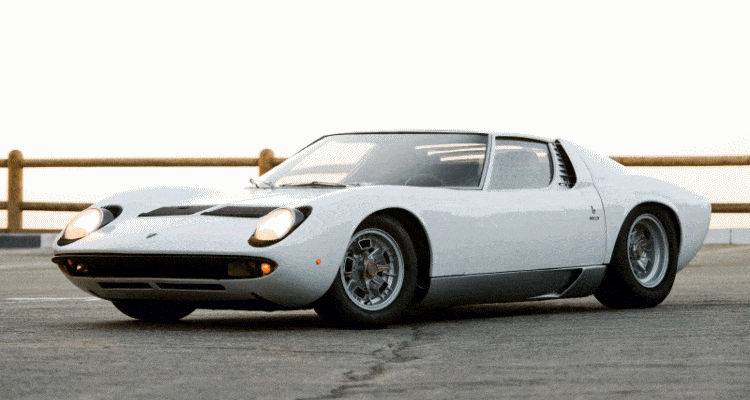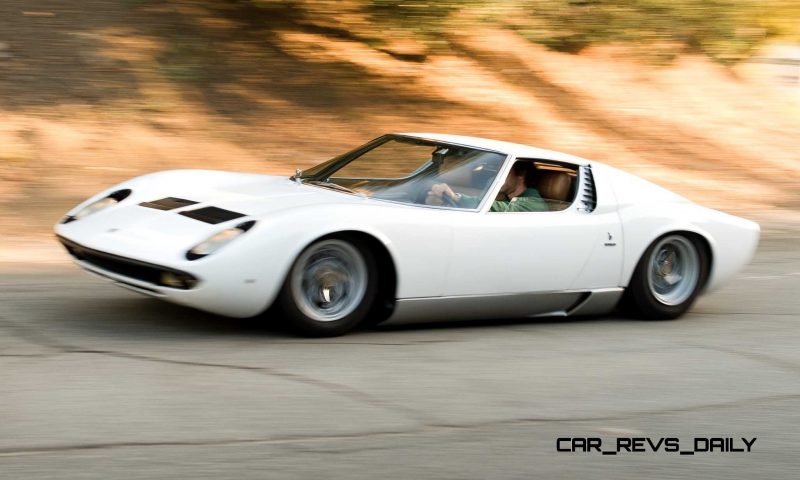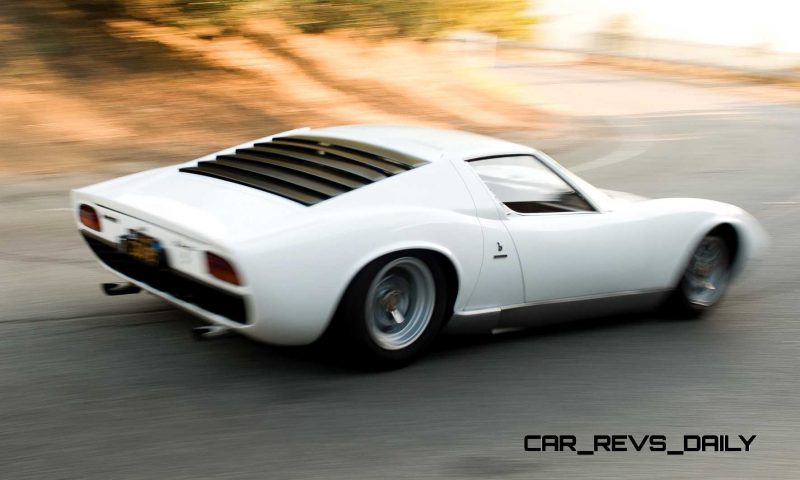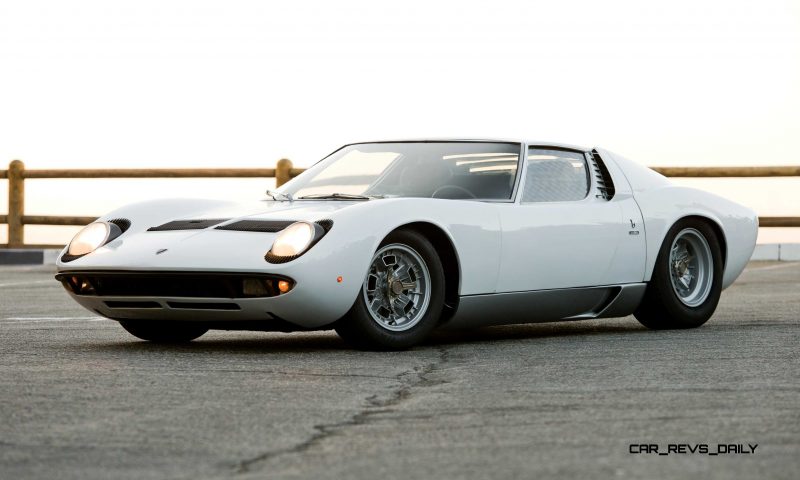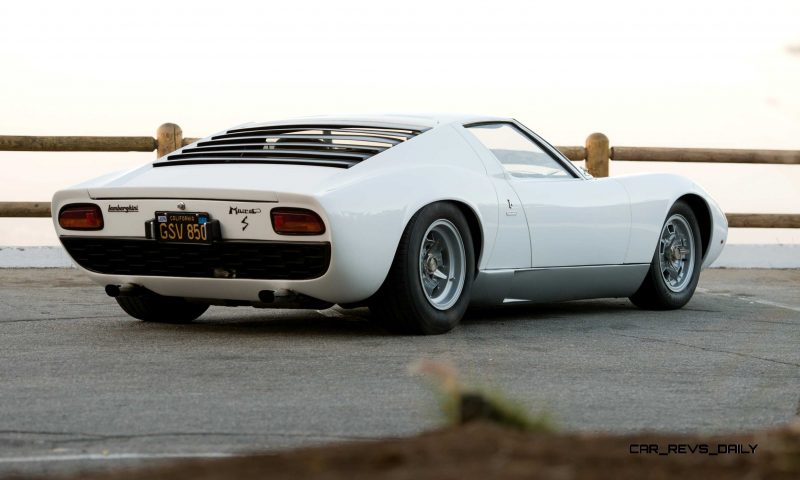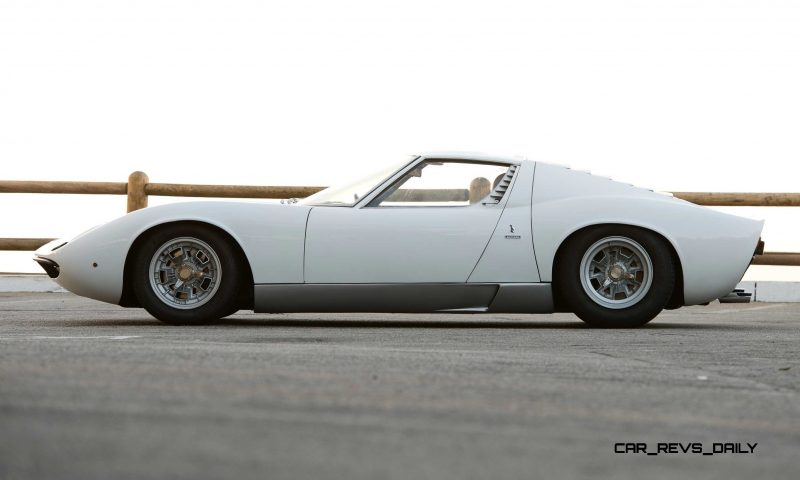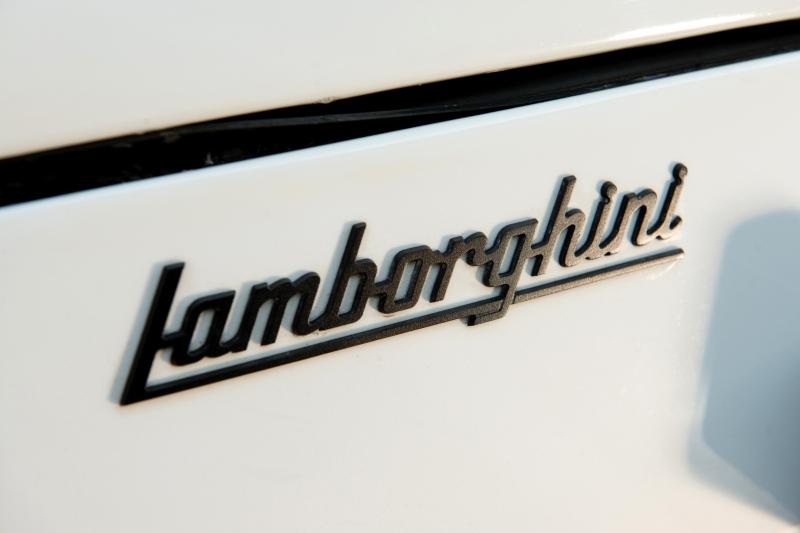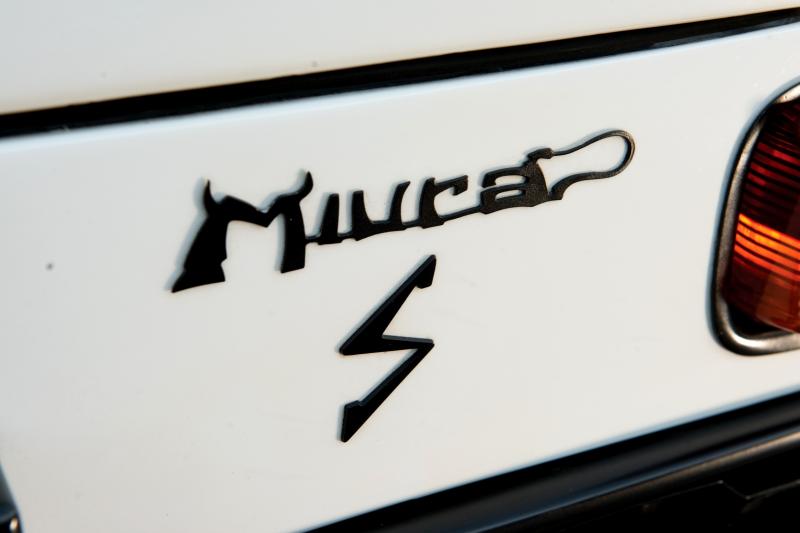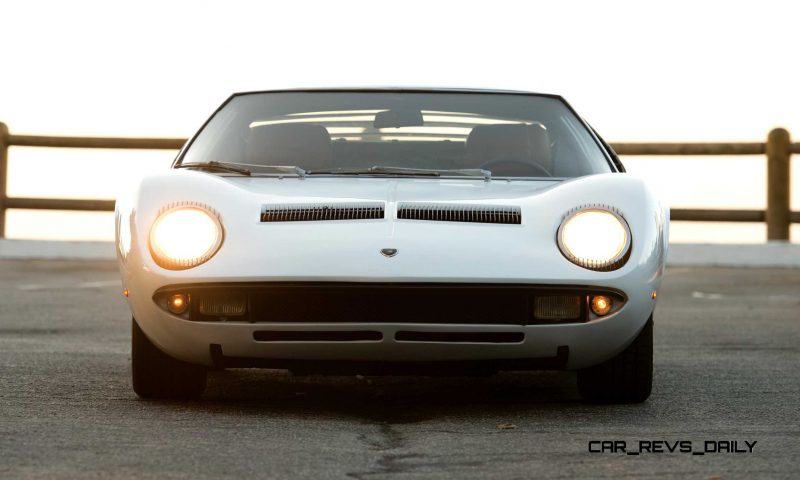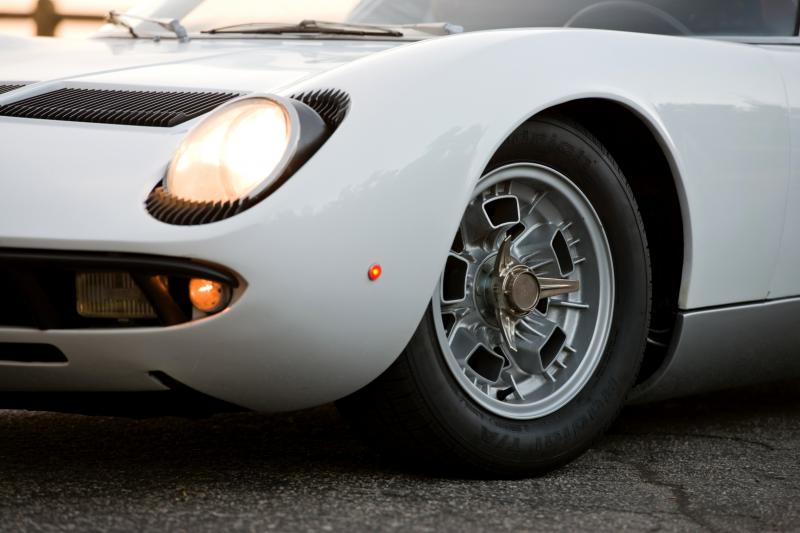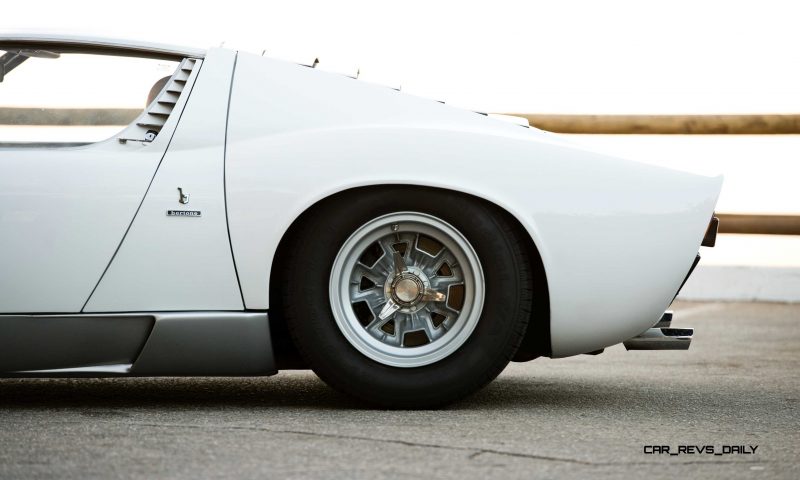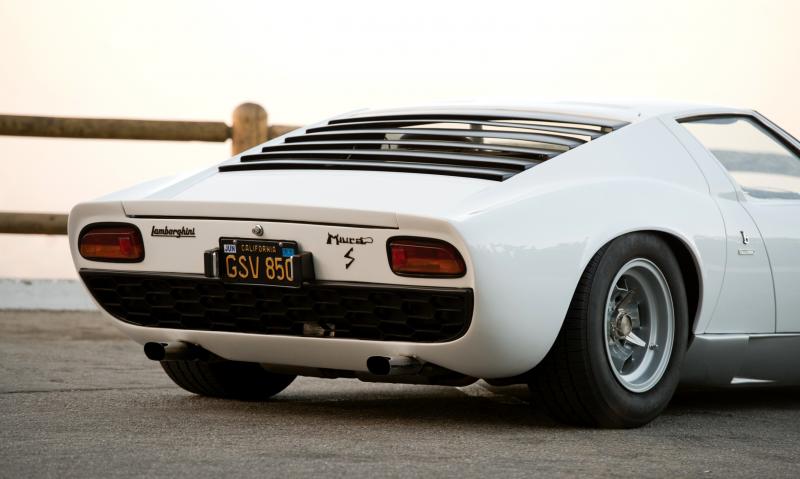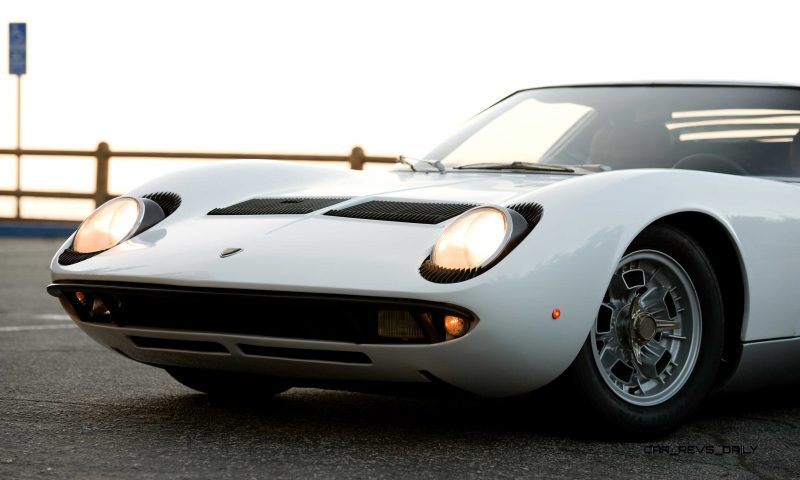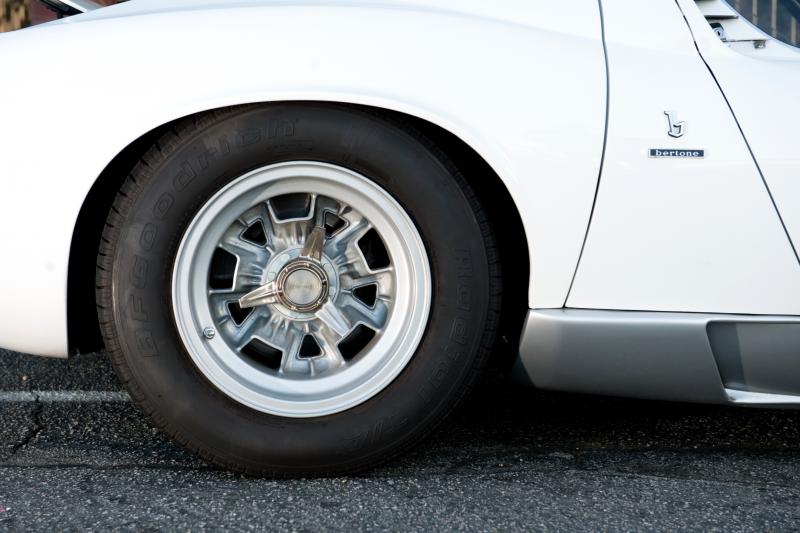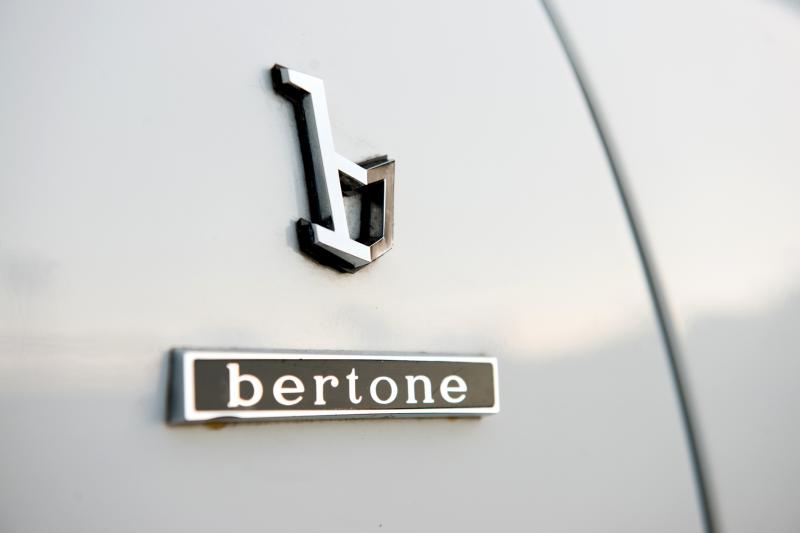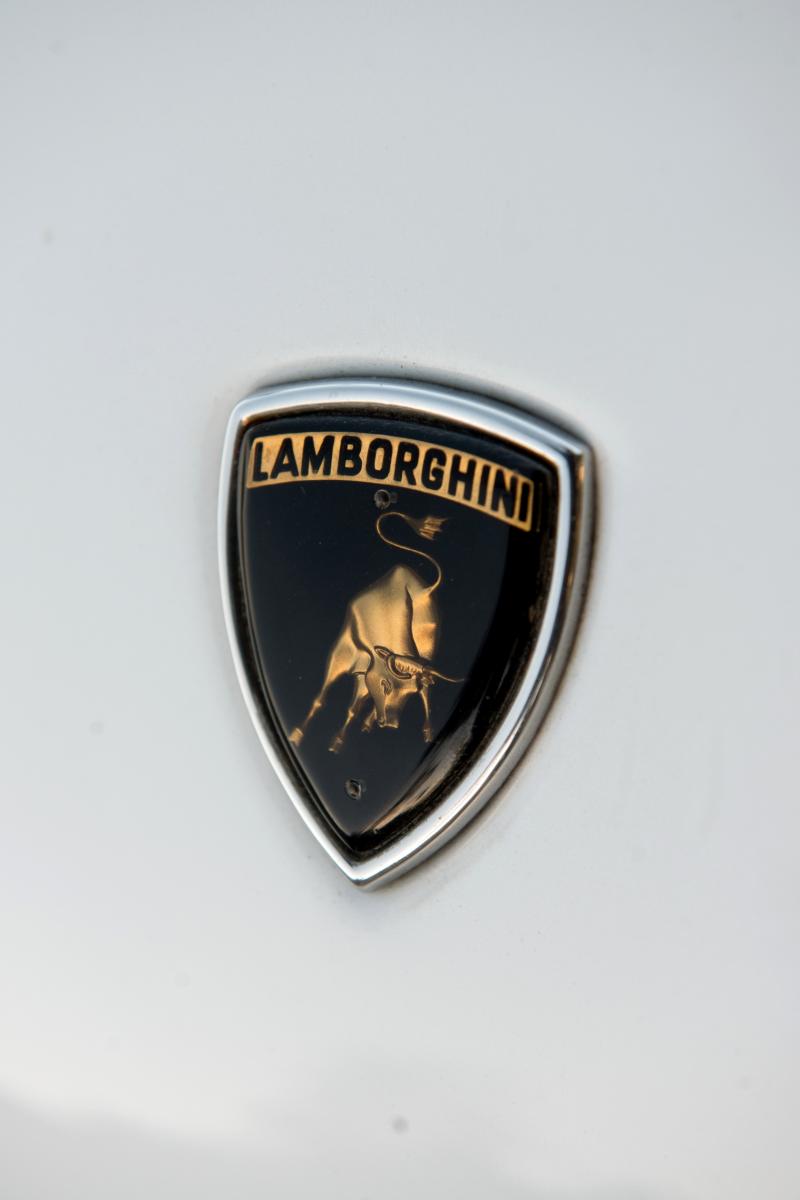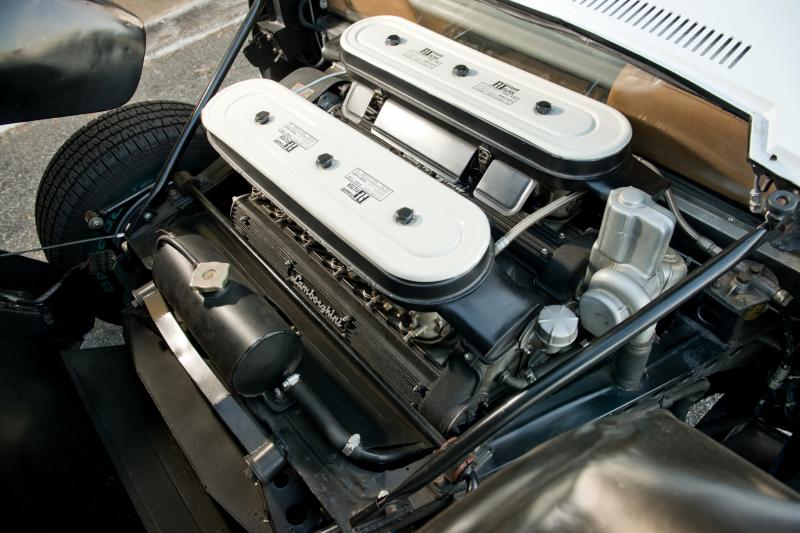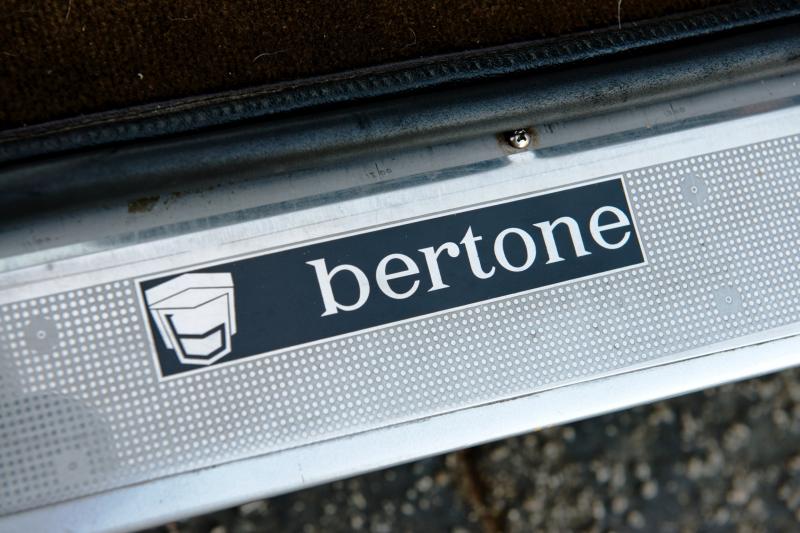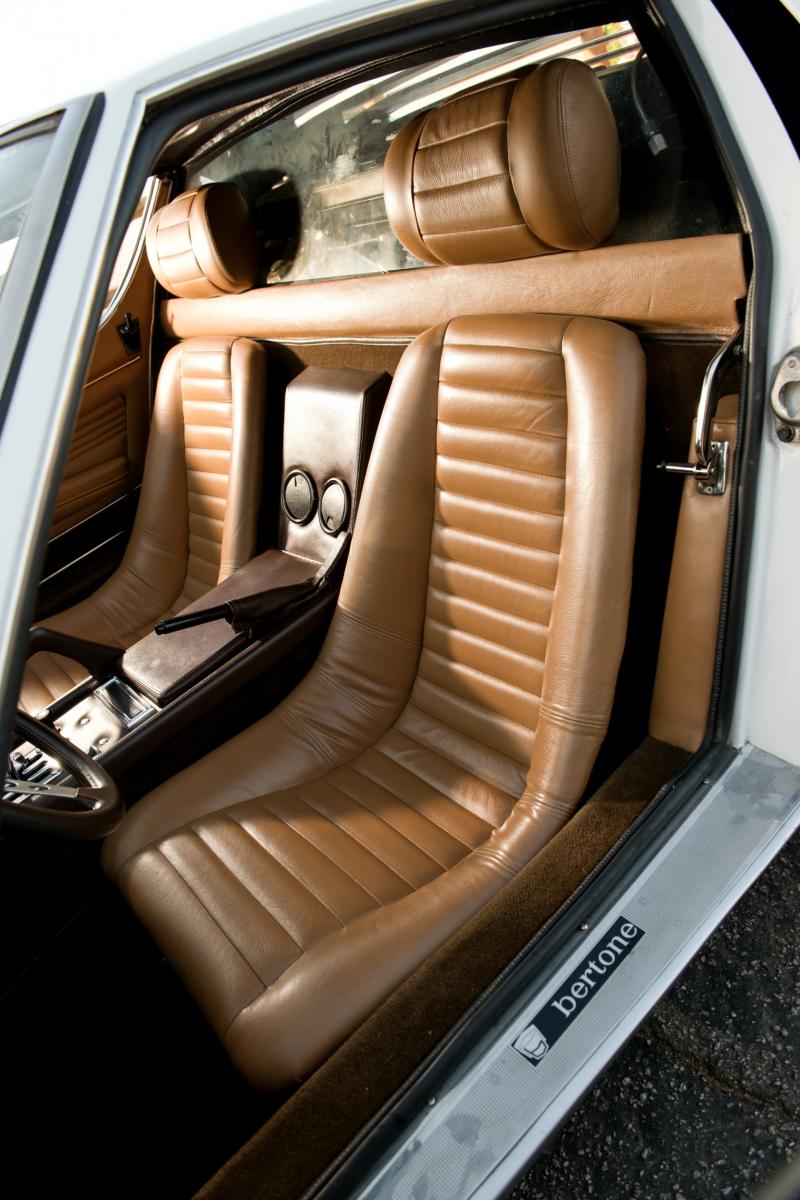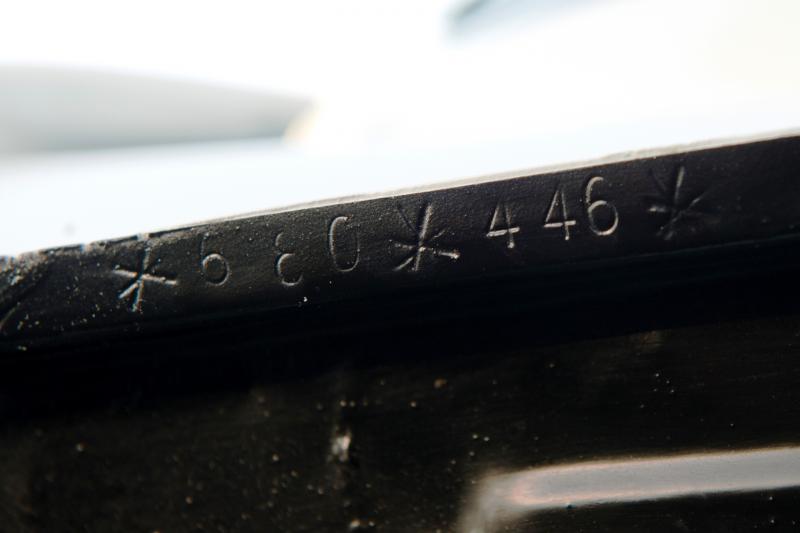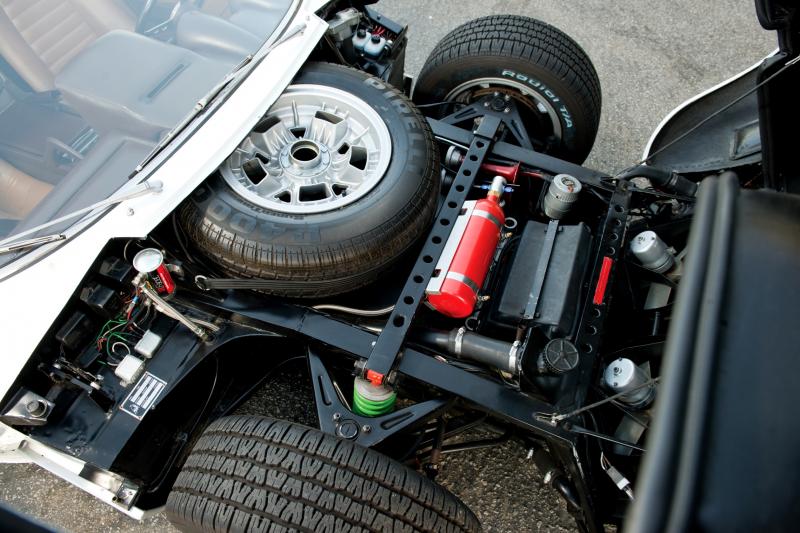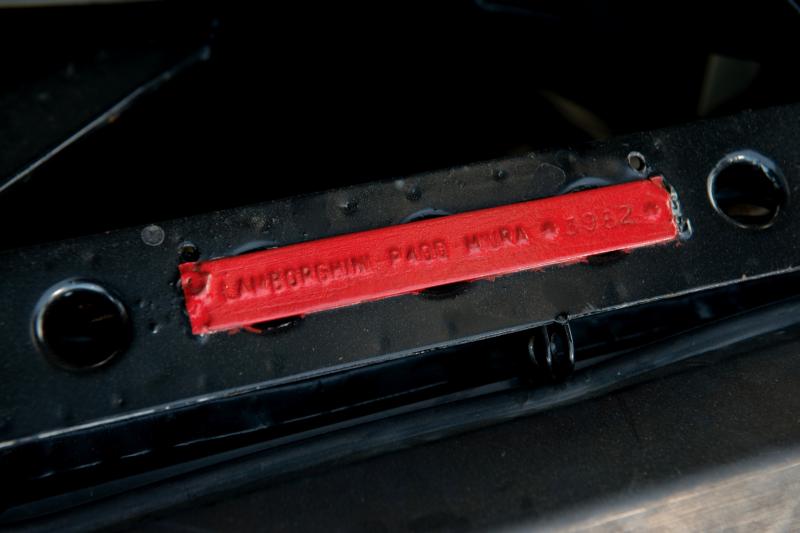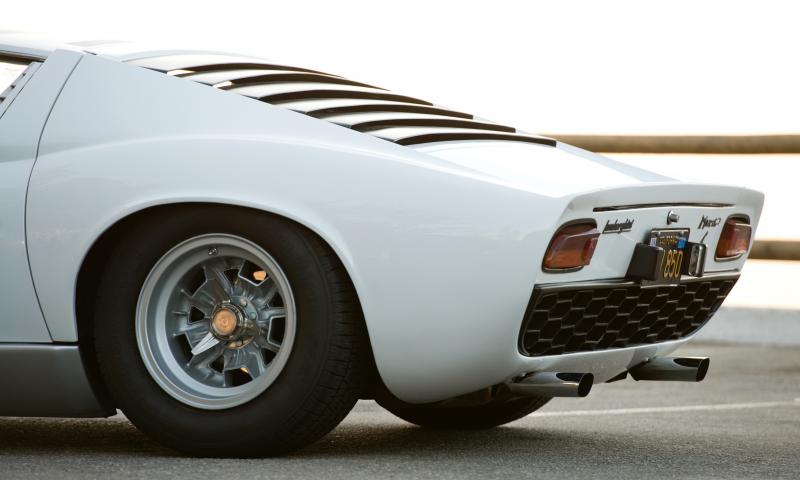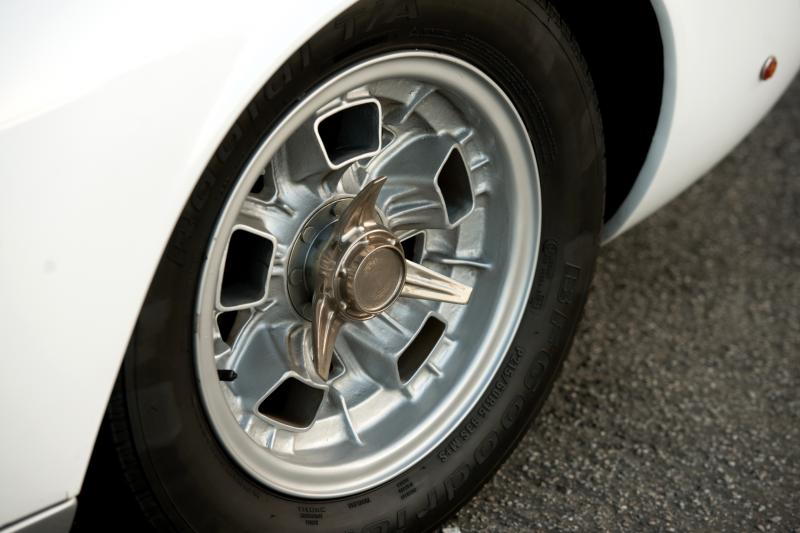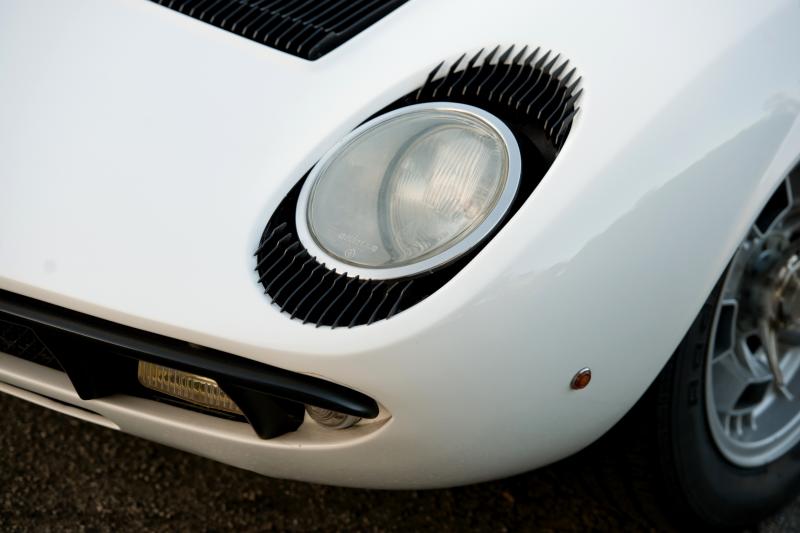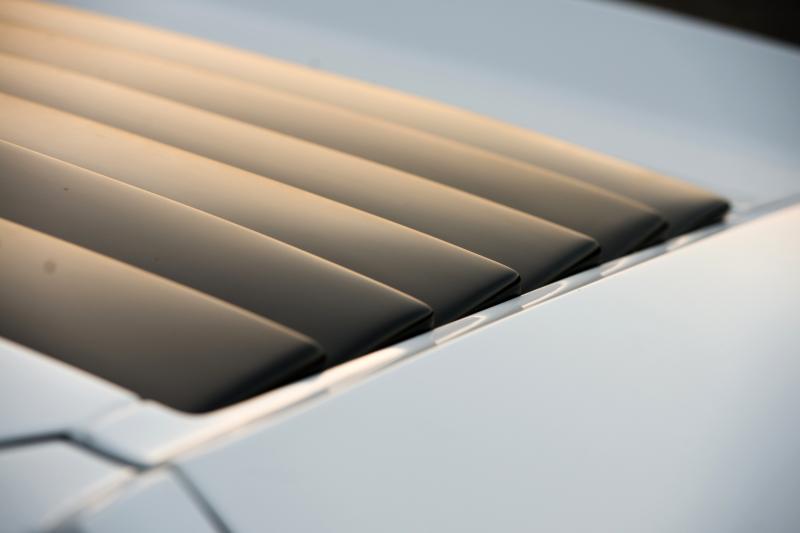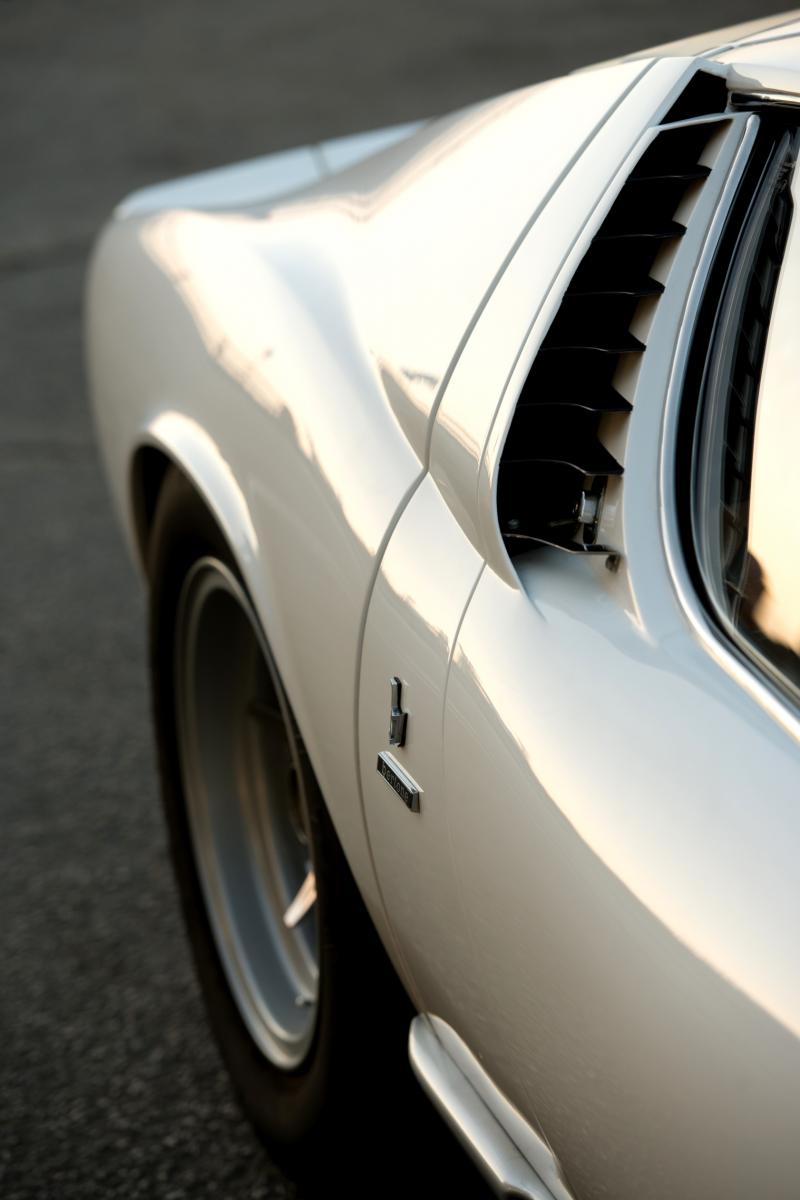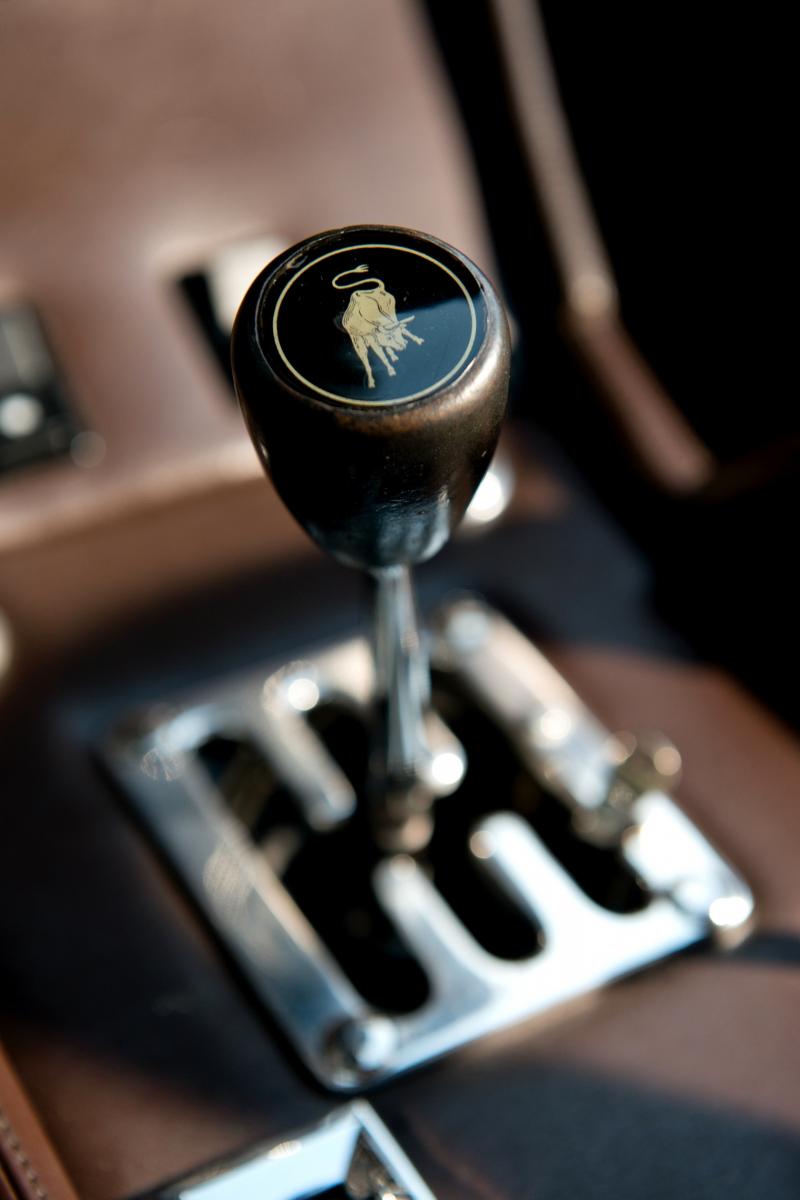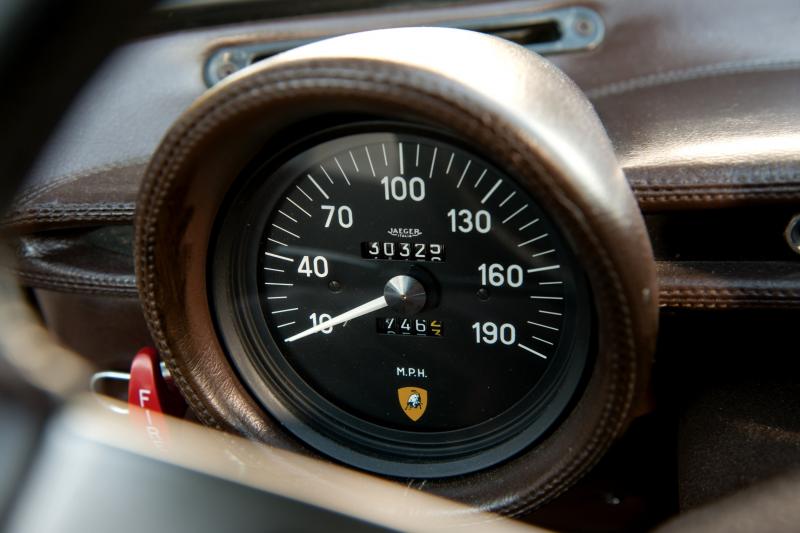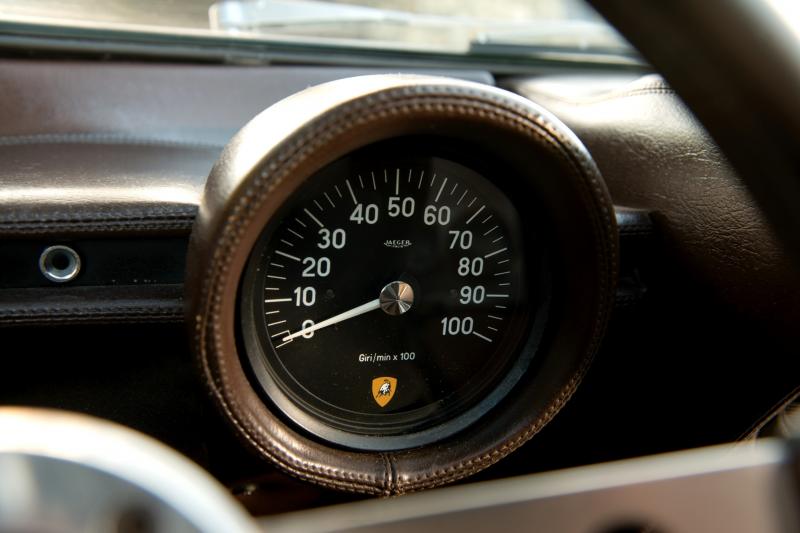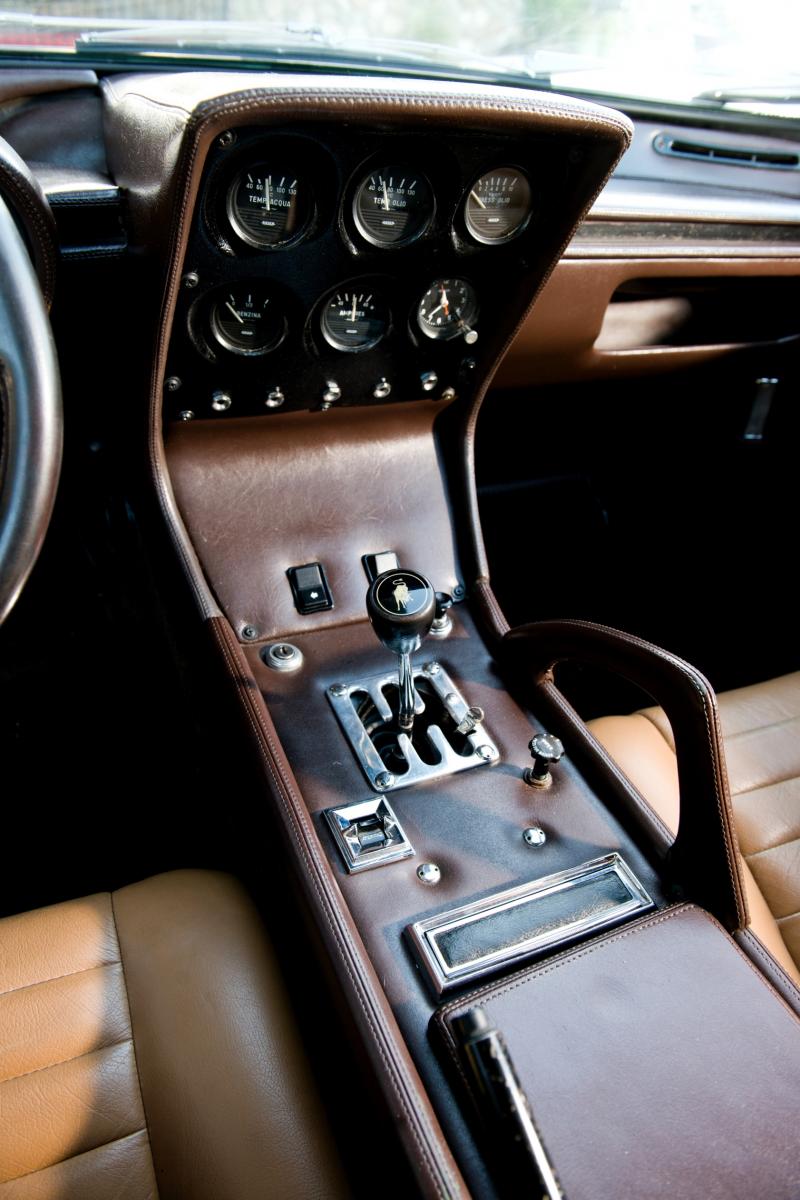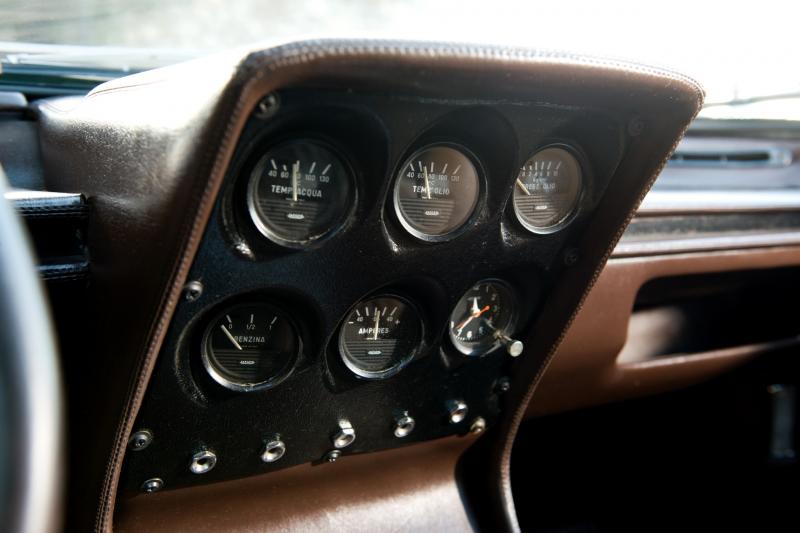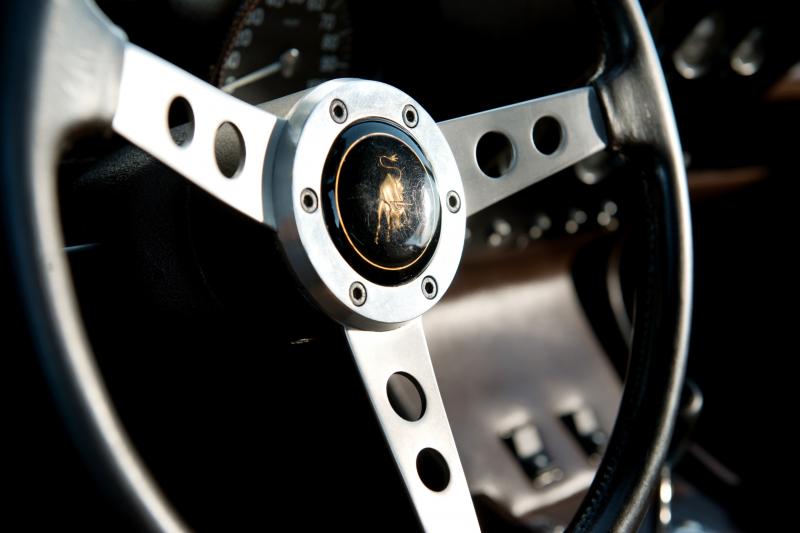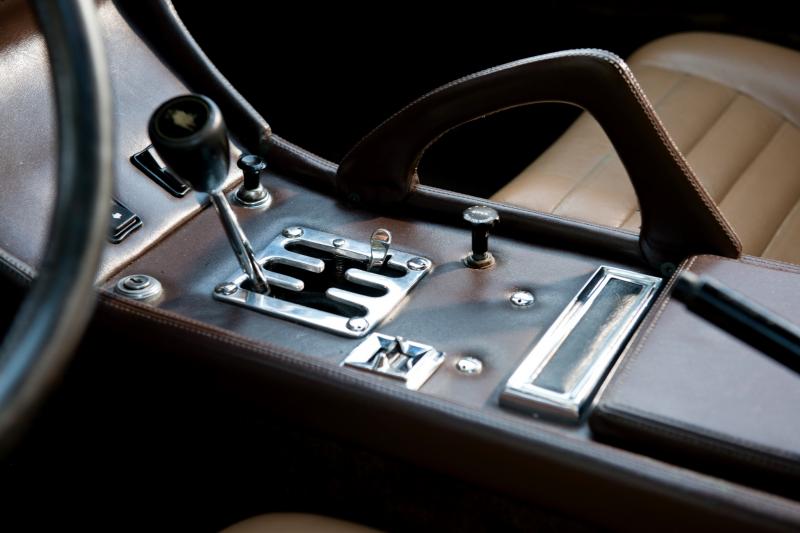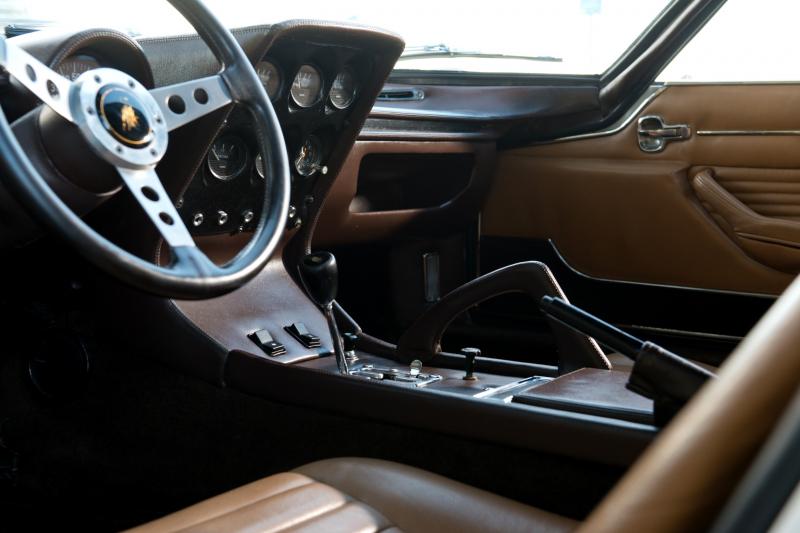After being declined an RM Auctions press pass for this year’s Monterey (Pebble Beach) auction, we froze RM coverage for a few months to focus on Gooding and Bonhams.
But this stunning Lamborghini has brought us back into the fold. A combination of the right spec and the right colors makes it one of the hottest classic supercars in the world in 2014.
Originally yellow, this early P400S runs an original engine and shows just 30,000 miles under its Carrara White exterior.
We have learned a bit about the Carrara White color recently – being named after the Carrara Marble quarry in Italy – famed for its snow-white rock.
A fitting shade for a legendary supercar – the mid-engine trendsetter that is the Miura.
1969 Lamborghini Miura P400S
1969 Lamborghini Miura P400 S by Bertone
Sold for $1,265,000
-
Chassis no. 3982
-
Engine no. 2898
370 bhp, 3,929 cc DOHC transverse mid-mounted alloy V-12 engine with four Weber 40 IDL-3C carburetors, five-speed manual transaxle, independent front and rear suspension with A-arms, coil springs, tubular shock absorbers, and anti-roll bars, and four-wheel hydraulic disc brakes. Wheelbase: 98.4 in.
-
A desirable early P400 S in wonderful colors
-
Restored by marque specialists
-
Numerous upgrades for modern driving







The Lamborghini Miura, named after Don Eduardo Miura Fernández, the legendary breeder of fierce Spanish fighting bulls, was the very embodiment of the “supercar” moniker. Prior to the arrival of the Miura in 1967, many sports cars certainly offered high levels of performance and handling. The Miura, however, was the first to be built around the criteria that defined our modern concept of the supercar: tremendous speed and jaw-dropping design coupled with technical innovation, resulting in a wallet-wilting price tag to which only the wealthiest could aspire.
By 1967, the latest version of the Lamborghini V-12 engine, which by now had been enlarged to four liters, was used for the entirely new and radical Miura. This Miura was first shown to a stunned public in March 1966 at the Geneva Salon, and its sinuous body was penned by Bertone designer Marcello Gandini, who was at the young age of 22 at the time. The Miura development team also included two brilliant engineers who would gain fame in their own rights, Gian Paulo Dallara and Paolo Stanzini.
Under the guidance of New Zealander Bob Wallace, the Miura’s chassis was carefully tuned to deliver the handling levels needed to contain and exploit the prodigious amounts of available power. With a double-wishbone suspension at each corner, in the best racing tradition, the Miura’s technical specifications were very advanced for a road going car. The mid-mounted engine was fitted transversely to allow for a more compact overall layout. The Miura’s original design sketches also called for a glass engine cover and a three-seat layout, with the driver in the middle and one passenger on either side. Although this latter feature never made it to the production Miura, it did reemerge on future supercars, most notably on the McLaren F1 of the 1990s.






While the glass engine cover was never used, the rear window louvers that did appear on production models were an industry first. As the engine was no longer front-mounted, but rather posteriore, the first generation of Miuras were accordingly named P400. This turned out to be a sensational, trendsetting decision. Almost immediately, the young Lamborghini marque leapfrogged to the head of the class, well ahead of both Ferrari and Maserati, with this innovative mid-engine configuration.
The Miura’s technical specifications remain impressive even today, as it has a lightweight frame, fully independent suspension, four-wheel disc brakes, and power provided by that well-proven, symphonic V-12 engine. The Miura, which breathed deeply through four triple-choke Weber carburetors, could initially offer 350 brake horsepower on tap and was capable of going over 175 mph. In the hands of the brave, it was more than a match for any other road going production car of the era.
A steady process of evolution and improvement was maintained throughout the production cycle of the Miura, and in 1968, the “S,” or spinto (tuned), version appeared, boasting 370 brake horsepower, updated brakes, and numerous other enhancements. The S version of the Miura was faster, more luxuriously appointed, and more stable with better braking, and it represented a large step forward from its already magnificent predecessor. The Miura S was capable of reaching 60 mph in just 5.5 seconds and 140 mph in fewer than 30 seconds and achieving a top speed of 177 mph. In April 1970, Road & Track called it “an exercise in automotive art.”









CHASSIS NUMBER 3982
According to the International Lamborghini Registry, Miura S chassis number 3982 was the 346th Miura built, and it was completed on March 12, 1969. The factory chassis list, published in Joe Sackey’s The Lamborghini Miura Bible, confirms that the present engine, number 2898, is the original to this chassis. The car was originally finished in Giallo Fly with a beige and black interior, and it was sent to Milanese dealer Gerini Maiocchi to be sold to its original owner.
Well-regarded marque specialists at DEW Motorcars in Sterling, Virginia, were entrusted to restore the Miura S to original condition. The car was subtly upgraded throughout to incorporate the best changes developed for Miuras over the years. The desirable split-sump lubrication system used on some later SVs was installed, along with a rear suspension built to a competition design, which was developed by the legendary Lamborghini test driver Bob Wallace. New original stock front and rear springs were sought out and installed, along with an electronic ignition, a Kevlar clutch, tuned Weber carburetors, cam oilers, an aluminum fuel tank, and a recored radiator. Most importantly of all, the original engine was reportedly fully rebuilt, detailed, and blueprinted, with thorough dynamometer testing and tuning, ensuring that it would perform beautifully. In all, this Miura involved four years of painstaking work to bring it to completion, with the restoration fully documented in photographs and receipts.
The current owner recently took an RM specialist on a test drive along Mulholland Drive in the early morning hours of a Friday. The car performed beautifully at high speeds, with a thrilling exhaust note, and it felt tight and well controlled. It was, as the specialist recalls, “an exciting way to wake up in the morning—much better than a cup of coffee.” It is being offered today with two sets of rear wheels, one of which is the SV-styled set currently mounted and the other is the correct S-style wheel set. Today, chassis 3982 displays around 30,000 miles, and it has been proudly owned by enthusiasts who enjoy driving their cars, thus making it ideal for the Miura connoisseur who prefers to enjoy his or her car as Ferruccio Lamborghini intended. The owner has supplied RM Auctions with a large number of invoices from DEW Motors when the car was in previous ownership, as well as receipts for a recent extensive servicing by renowned West Coast specialist Gary Bobileff, which took place under the current owner’s own care.
For road going thrills, one cannot beat a properly set-up Miura.

Tom Burkart is the founder and managing editor of Car-Revs-Daily.com, an innovative and rapidly-expanding automotive news magazine.
He holds a Journalism JBA degree from the University of Wisconsin – Madison. Tom currently resides in Charleston, South Carolina with his two amazing dogs, Drake and Tank.
Mr. Burkart is available for all questions and concerns by email Tom(at)car-revs-daily.com.

